Report 11: Influencers x Subscriptions
If attention is the currency of our digital world, then entertainers are the new rich.
They’re not Ivy-League educated, most skipped business school, and being a part of the corner office club would likely hurt their credibility, not help it. Yet, in 10 years, we’ll look back on influencers and entertainers as the foremost business minds of this decade.
In this report, we’ll focus on the changemaker ahead of the pack, and what the future holds for influencers. 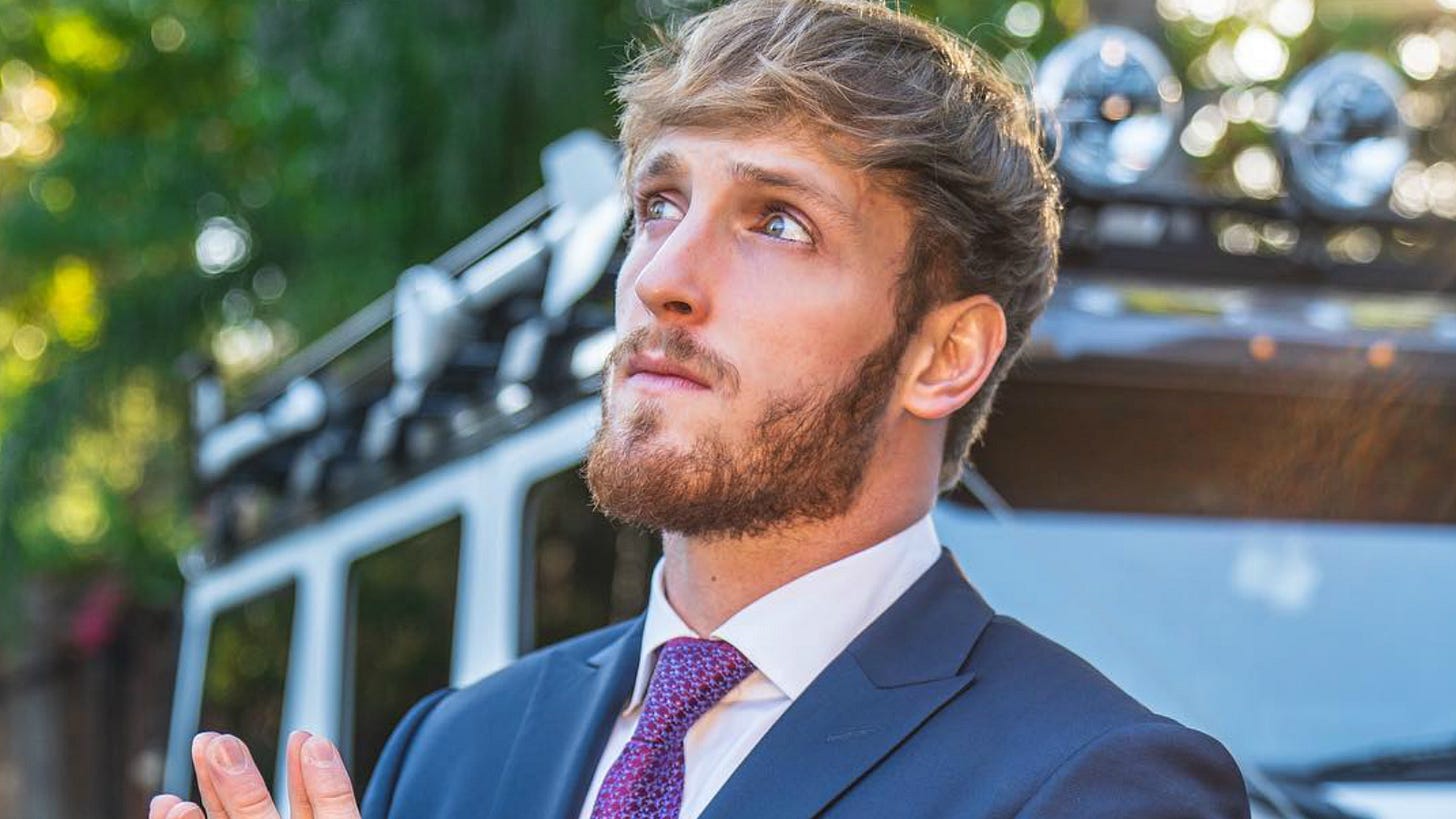
At the head of the influencer wave stands Logan Paul.
This was not always the case, though. Two years ago, everyone was sizing his coffin. In a 2017 apology video, Logan Paul admitted he didn’t expect to be forgiven. In his own words, he made a severe, and continuous lapse of judgement. Paul posted what only can be described as a career-ending video. At risk of opening old wounds, I’ll let you make your own judgement. In the aftermath of the video, Youtube dropped him from the Google preferred advertising program. Sponsors avoided him like President Trump avoids protective masks. Other projects were put on hold, or cancelled altogether. Paul’s lucrative rise to internet stardom was all but finished. Or so everyone thought.
Between December 2017 and March 2018, SocialBlade statistics showed a 47% drop-off in views, and an 88% slowdown in subscribers. Yet, Paul’s channel would still draw 2.5 billion views in 2018. Between ad-money, partnerships and deals Paul netted $14.5 million on the year. Instead of zeroing out, his bank account grew 16% from the previous year. Viewership, and revenue were up.
It turned out, Paul’s career was only beginning to take off.

Like any smart investor, Paul would diversify his portfolio.
He changed his Youtube posting strategy from longer videos (15 to 18m) to shorter, more regular vlogs. A lesson he likely borrowed from the meteoric rise of David Dobrik, who at last check, clocks 17.8 million subscribers. Every single one of Dobrik’s videos are exactly 4:20 minutes; a cheeky quip for pot-lovers sure, but more importantly, make the videos ideal for digestibility and consistency; videos come to followers three times a week. His last video was viewed 17 million times. Even Paul doesn’t convert his audience that well.
Outside of Youtube, Paul branched into live events, hosting the Challenger Games; an elementary school track-meet by any other description. Except, instead of asthma-attacks, light-up sketchers, and lofty dreams of track scholarships, youth athletes were replaced by a crowd of entertainers a decade outside of their athletic prime. Paul himself would pull his hamstring in the 100m no less than step off the starting line, after declaring himself the fastest Youtuber on the planet. Ouch?
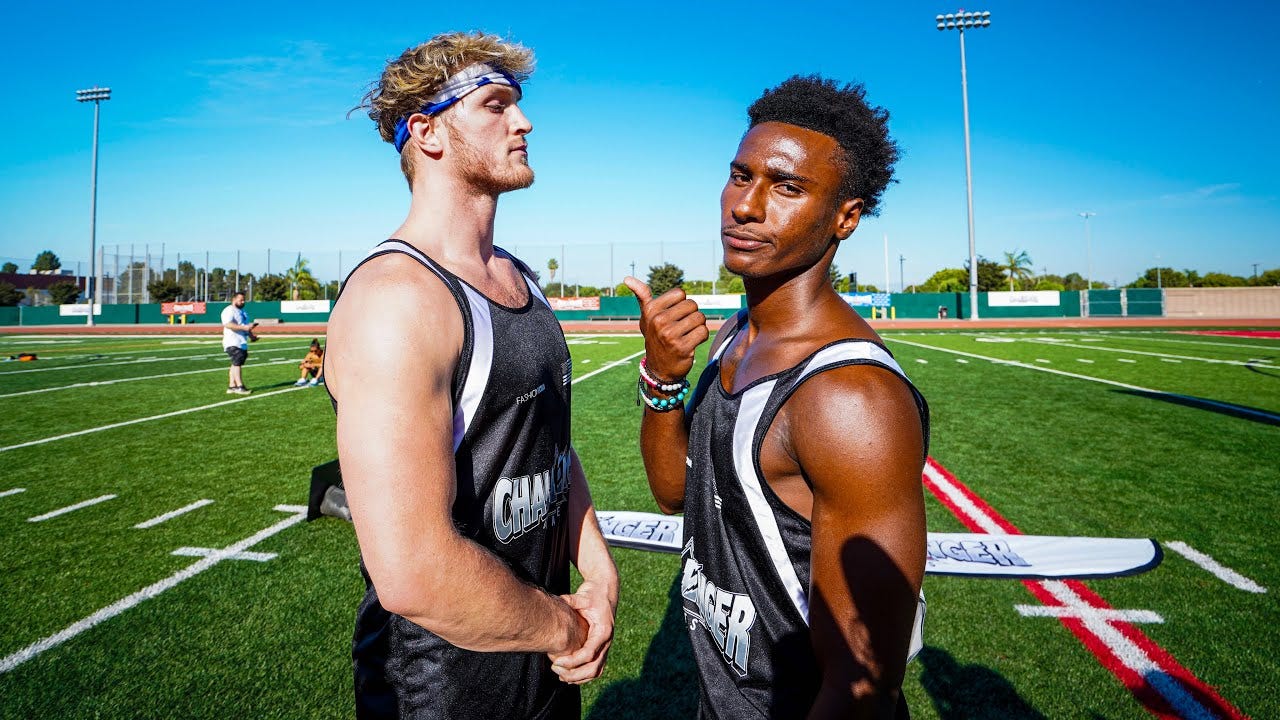
Live events didn’t stop with the Challenger Games.
Paul also ignited a new wave of influencer boxing matches. Between pay-per-view sales, and ticket sales, his first fight drew over $11 million in revenue; a record that quickly fell to the rematch bout a year later.
Two other fights spawned shortly after, and judging by the traction of the event, boxing may need influencers more than influencers need boxing. All the major fights have been broadcasting on the streaming service, DAZN. In 2019, DAZN had its biggest day of fan growth on November 10, the day after the Paul vs. KSI II fight, adding 79,045 new fans, followers or subscribers on Facebook, Twitter, Instagram, and YouTube. The top performing Instagram post, and Tweet on DAZN’s feed that year was a clip of Paul and KSI hugging it out after the fight, drawing 444K and 220K impressions respectively.
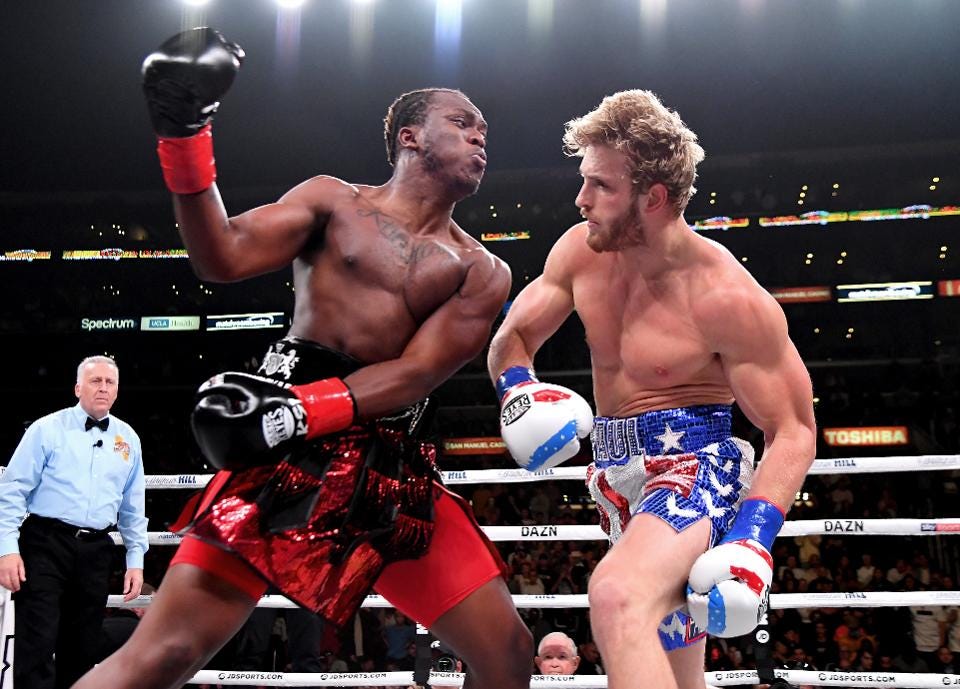
Then there’s podcasting.
The podcasting market has exploded anyway you look at it. Monthly listeners are up 31% from last year; the largest single year increase since this data started being tracked in 2008. Advertising revenue jumped as well. In 2017, podcast advertising drove $313 million in revenue. In 2019, that number has more than doubled to $678 million.
Paul launched his own podcast, Impaulsive in early 2018. The timestamp is important. Paul’s efforts in podcasting was ahead of his time, especially within the influencer community. Now, you’d be hard pressed to find a popular Youtuber without one. 100Thieves, the gaming and lifestyle backed by Drake and Scooter Braun sometimes looks closer to a podcast network than a gaming channel, with four original shows already, it’s hard to imagine a future where most of their streamers, teams and players aren’t producing their own shows.
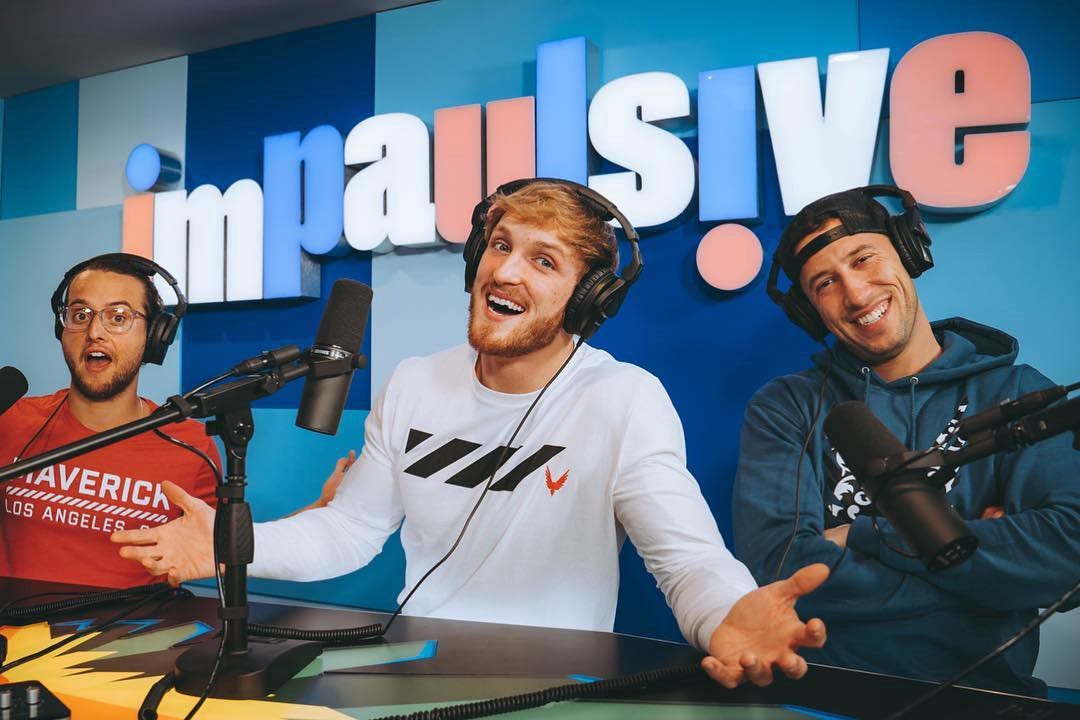
Growth-Hacking for Dummies:
To grow his own show, Paul leaned on his audience on Youtube. Instead of just publishing the audio, Paul completely remodelled his garage into a fully-fledged studio, complete with multi-camera set-up you’d be more likely to find on Hollywood lot, or production studio than an influencers house. Today, the Impaulsive Youtube channel has over 2 million subscribers. Episodes draw 1 million viewers on average. Smaller clips are chopped up and put onto a seperate channel that clocks similar viewership. Look closer and the strategy behind the podcast is genius.
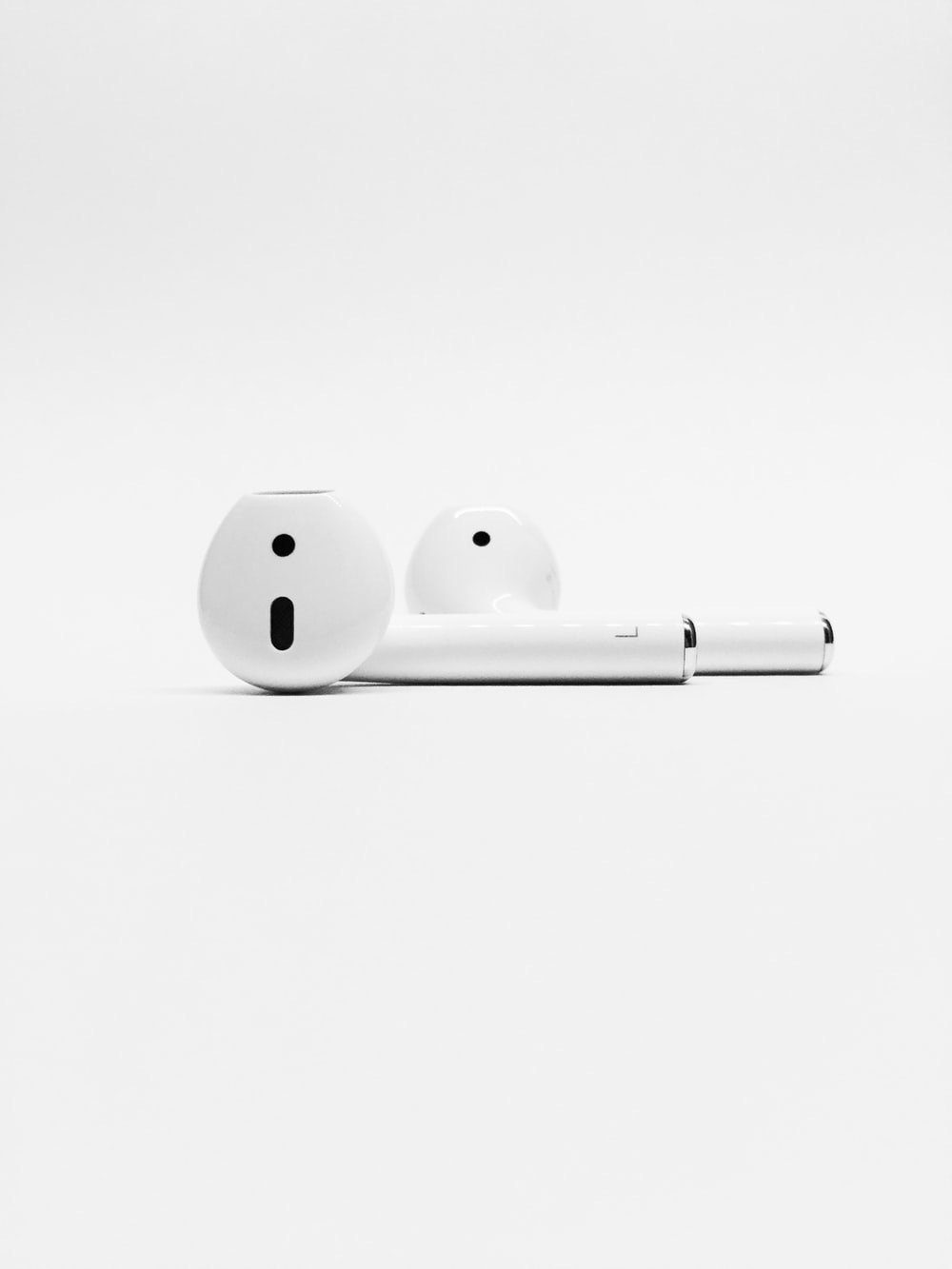
All the data shows that video is the most consumed entertainment medium. On average American’s spend 5 hours a day watching video. But like your first girlfriend in high school, video is high-maintenance; it demands your full attention, and often more. Audio offers lower barriers to consumption, and this is one of the many reasons why podcasting has taken off. Regardless of the medium, what truly matters is where, when, and why people consume. Here, Paul offers a masterclass in diversification. When you first wake up in the morning, most people aren’t jumping out of bed to listen to an hour long podcast. Podcast clips, or 3-4 minute vlogs are much more digestible when time and attention are scarce. Across the board, Paul has filled every pocket of attention available with his content.

Finally, we must talk about subscriptions.
Paul recently overhauled his Maverick clothing line to bring production and distribution in house; a move away from the near universal strategy of influencers partnering with third-party vendors like FanJoy. Maverick Clothing now lives on a seperate website, with product drops moving closer in line with the drip-model popularized by streetwear brand Supreme. Moving clothing in-house is unique, but it’s not what interests me about the move. The bigger play was launching a monthly subscription service. A move Paul himself described as (1) the greatest project of his life, and (2) innovative in a way few others have considered in the influencer space.
A bold claim? Yes, but that doesn’t make him wrong.
The subscription costs $20 per month, and judging by his following’s response it will likely jump in price soon. Paul doesn’t need everyone of his 62 million followers to pay for his subscription, nor does he want them to. The subscription is the bottom of Paul’s business funnel. It’s a play we’ve already seen popularized by video games streamers, and the sneaker resale market. Paul is hunting for whales. Not the kind you might find in the ocean, or putting along the sidewalk in third gear on a segway. The joke wrote itself, sorry. Weight has nothing to do with it, beyond satisfying my questionable taste in humor.
The whale monetization model is about passion. Gamers offer 99% of their content for free, and make the lionshare of their earnings on the most engaged, top 1% of their fan-base. Streaming is the top of their funnel, the same way podcasts and videos are the top of Paul’s. From there, fans can pay to buy into a monthly subscription to get access to private Discord servers where a far smaller community of fans live. Here, they get a much more private, and intimate setting where they can interact with the streamer. It’s a curated experience, and it has to remain small for subscribers to get the value from it; it can’t be for everyone.
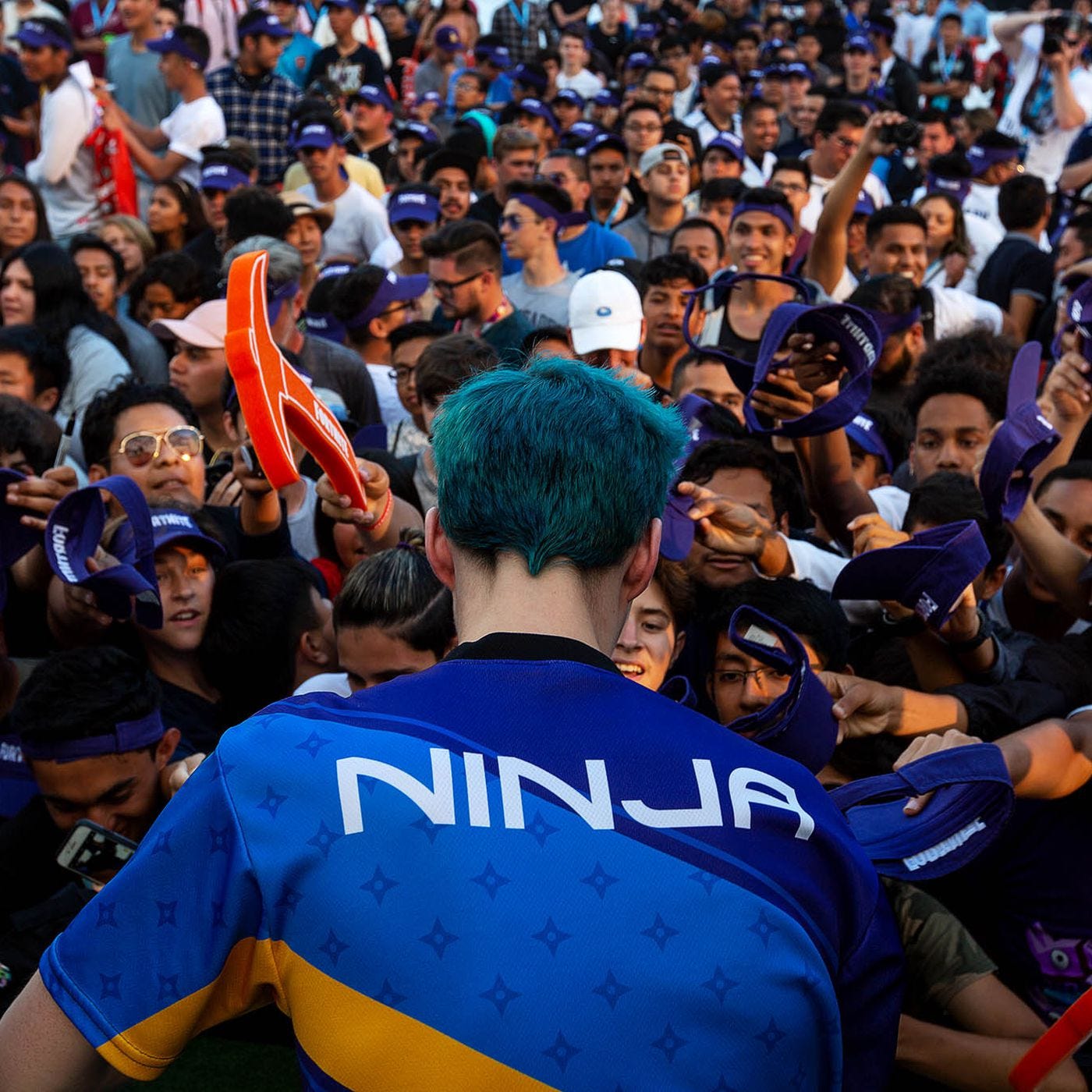
In 2018, Ninja got his own stream on New Years Eve. He played Fortnite live Times Square to ring in the New Year.
Pay-walled content also serves Paul.
He knows he can’t be drunk, or faded (his own words, not mine) on Youtube. That would bite the hand that feeds him. Ad dollars still pay his bills, in some part. The Maverick Club allows Paul to post edgier content that would face public backlash on other platforms. Place your value-judgements and virtue-signalling aside for a moment and consider how entertaining a drinking contest between Steve-Will-Do-It and Paul would be. What if set a betting line, and they allowed fans to bet on the event?
Whether content, or experiential the value of the subscription is access. He’s focused on creating an authentic experience, because that’s what this segment of his audience is hungry for. He’s the one penning the weekly emails. He is the one FaceTiming fans twice a week, hosting a private dinner every month, or organizing events in real-life. Paul is also borrowing from Mr. Beast’s giveaway playbook. Every month, a member of the Maverick club wins a car, or a $10,000 cash prize. On a recent podcast, Paul hinted that these gifts will only get bigger. He certainly has the money, but it goes deeper than the number on the bill.
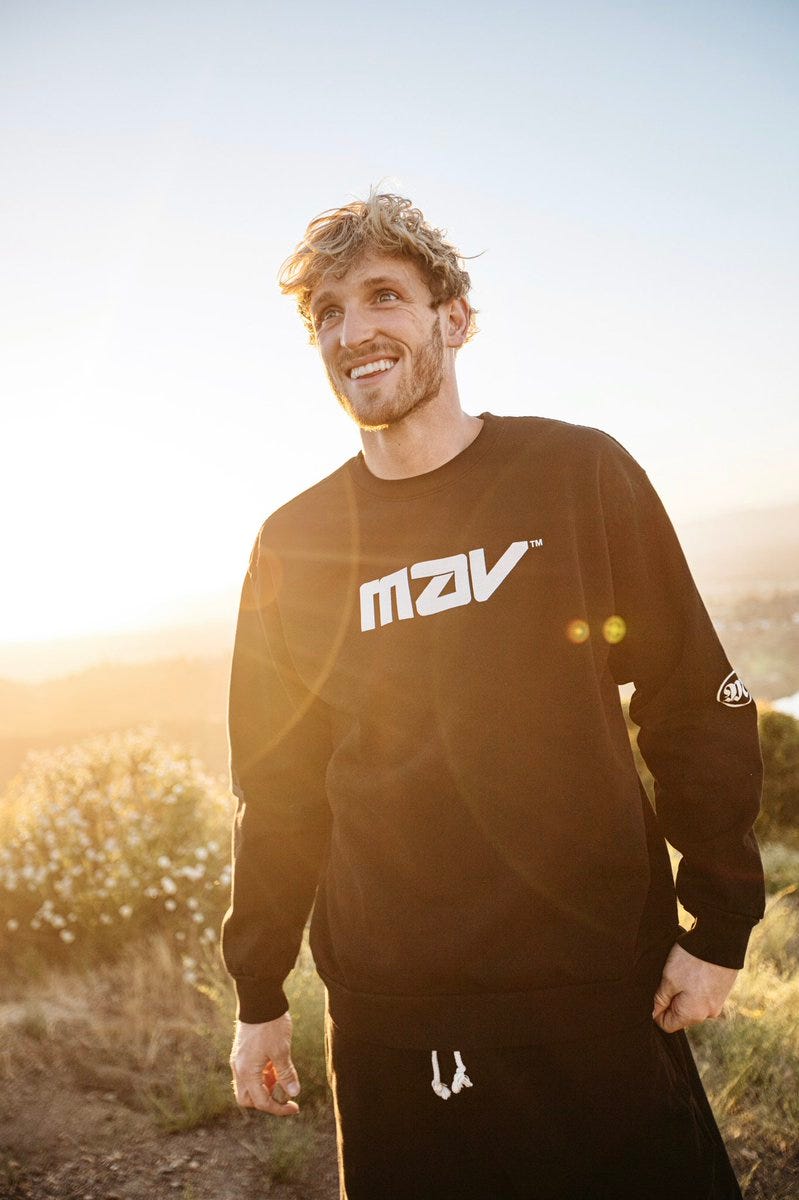
Influencers are facing an inflection point in their business.
The model of monetizing through advertising, and sponsored content will always be an option. But this puts influencers somewhat at the mercy, and agenda of third-parties, and it also limits how they can monetize. Marketers are getting smarter about influencer marketing, and the fit between the partner and the influencer will matter more than ever moving forward. Commodity partnerships for wireless earbuds, or erectile-dysfunction pills, (what’s good BlueChew), benefits the top influencers with universal appeal. If the influencers content doesn’t fit, is too edgy, or volatile, then the sponsorship deals could dry up. And this is precisely what makes recurring revenue from subscriptions so important.
There is also only so much runway for monetizing through merchandise. Unless the creator can create an unique identity around their brand, like Supreme has done with skating, and the Nelk Boys are on track to do with their audience, one can only own so many hoodies and graphic t-shirts. On the sponsorship side, similar problems emerge. If the money is good, this will lure many influencers to rely on ad-supported models. Big cheques will be good for the short-term but won't position them well for a future where the best money will be made through directly monetizing their following.
See how the Nelk Boys use the first 0:30 seconds of their video to showcase their upcoming June product drop.
To Summarize:
Since 2017, it’s hard to argue anyone has done more to change their public perception than Paul. He successfully navigated a crisis most predicted would end his career. He was early in podcasting, and now averages a million viewers an episode. He’s an innovator in the space, and isn’t tied down to one revenue stream. And he’s competing in an area where few of his competitors have followed. The takeaway from Paul’s success is simple, but not easy. Audience is the new currency. Advertising, brand deals, and subscription don’t work without an audience behind them.
Subscriptions could make Paul one of the richest entertainers in history.
That’s all for this report, make sure to subscribe below to get my writing delivered to your inbox. You can also follow me on Twitter, @mosedesmoulins. If you’re looking to collaborate, please reach out! If you enjoyed, please share this post with the button below thx!


